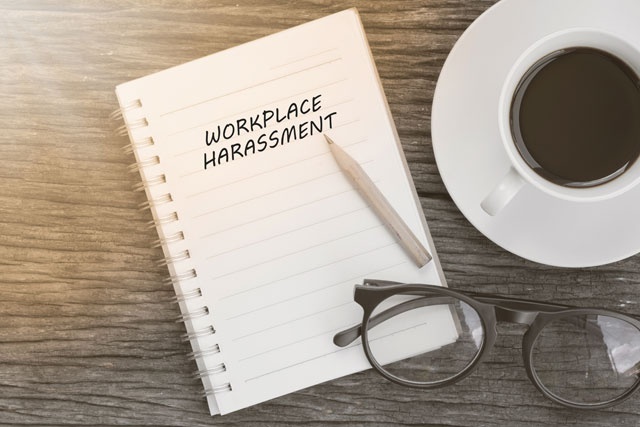Why is exercise necessary?
Nearly 70 percent of the U.S. population does not get enough exercise, and that's a conservative estimate because it relies on what people themselves reported in a survey (National Center for Health Statistics. Chartbook on Trends in the Health of Americans. Health, United States, 2008. Hyattsville, MD: Public Health Service. 2008.) A more realistic estimate might be found by studies that use movement-detecting devices. A study in Medicine and Science in Sports and Exercise using accelerometers to measure movement reported that only 3 to 5 percent of American adults get 30 minutes of sustained moderate-intensity exercise just 5 days a week. (Troiano RP, Berrigan D, Dodd KW, M�sse LC, Tilert T, McDowell M. Physical activity in the United States measured by accelerometer. Medicine and Science in Sports and Exercise. 2008; Jan;40(1):181�8.)
As a society, that means there are a whole lot of people out there who have ample opportunities to increase their level of activity, and as a result, provide themselves with the opportunity to get into better physical condition, improve their mood, handle stress better, and increase the amount of calories they burn in a day.
Exercise has tremendous physical benefits, and for many people it is the starting point for health and wellness, but it is just one piece of the weight loss management puzzle. Nutrition is the other major factor. If you increase your activity level and start burning 300 more calories a day without eating any more food, you will lose weight. But if you "reward" yourself for an hour of swimming with a slab of Death By Chocolate cake, you will probably be consuming more calories than you burned in your workout.
Let's be clear, exercise has benefits apart from weight loss, and it should be a part of everyone's life, in whatever way is healthy and manageable for them. However, if your goal is weight loss, exercise has to be paired with healthy eating.
At the end of a long work day, you may feel too tired to consider going to the gym. Or perhaps you feel like you don't have time because you have a newborn in the family. Maybe you have to care for a sick spouse or parent, and you just can't get to the gym. Or it could be that your work is so demanding you feel like you can't get away. All of these issues are roadblocks to exercise, and if you are committed to losing weight, you will have to apply your own creativity and ingenuity to get around them.
How often do you hear yourself say, "I just don't have time to go to the gym?" If you look at a goal of exercising one hour a day or more, plus commute time to get to a gym, change clothes, shower afterward and get on to the next activity, yes, exercise can sound like a huge time commitment. If this is your roadblock, you will have to think creatively about breaking that one-hour chunk down into smaller pieces. Studies have shown that three 10-minute bouts of exercise can be just as beneficial as one 30-minute session.
Perhaps you can take the dog for a 1-mile walk in the morning and evening. Or think of ways to multi-task, like talking on the phone while walking, using the Nordic-Track while reading through papers for work, or jogging around the football field at your child's practices. Many fitness DVDs on the market now include workouts broken down into 10-minute chunks. Lunch breaks at work can be a good time to go for a stroll.
Try to get in 3 to 4 15-minute sessions a day. Remember, if you started with no exercise, anything you can add in is a good beginning. Once you begin to feel the positive effects of exercise, you might find more ways to extend each of those small sessions.
"My job is so demanding, I just can't get time for myself." There are some fundamental problems with a job that won't allow you to care for your basic human needs, like exercise and personal relationships, but work is work. No one wants to lose their job just so they can lose a few pounds, but at the same time, studies show that overweight people are at greater risk for coronary heart disease, stroke, some cancers, Type 2 diabetes, osteoporosis, and depression. Should you develop one of these health issues, you will be forced to take time away from work to manage your illness, so it only seems logical to carve out the time before it becomes a crisis.
We are going to assume that the person in this scenario has an ogre for a boss, and going for a lunchtime stroll would get them fired. This overworked soul must already be an excellent multi-tasker who is probably able to walk on the treadmill at home in the evenings while responding to emails on the Blackberry. You can field phone calls while walking--although it is challenging to take notes. Sometimes, it is absolutely the best thing for your mental health to turn the phone off for 30 minutes and do something where no one can reach you. Consider swimming, yoga, or a brisk walk. Half an hour is not a long time, but it can go a long way toward clearing your head and making you a better worker. As Thomas Jefferson once said, "A strong body makes the mind strong."
New mothers gain about 30 pounds during pregnancy. Although some of that weight leaves your body with the baby, much of it remains. Common wisdom says "one year up, one year down," meaning it takes about a year to get your body back to pre-baby shape, but for some people, a year is optimistic. When baby sleeps, the sleep-deprived mother is likely to grab a nap, too, or try to tackle some of the million household chores that pile up during the day.
New motherhood can also be a lonely time as women are often accustomed to working and having a large sphere of friends to socialize with on a daily basis. Maternity leave and a new baby can leave mom feeling suddenly isolated. There are two great ways to get around the new-baby roadblock. In warm weather, one is a stroller. In cooler seasons, a useful outlet is a mother's group that provides exercise opportunities.
Studies have shown that pushing a baby in a stroller is an excellent workout--especially when you walk at a brisk pace on hilly ground. You don't have to invest in fancy equipment; any stroller will do, but the 3-wheeled jogging strollers are definitely nice to have. When you pack your rig with the kid and the diaper bag, you could be pushing as much as 45 pounds up and down hills. If you have another small child, you can push both in a double stroller for twice the workout. In most communities, it's not too hard to find other new moms who would be happy to have a walking buddy. The buddy provides you with companionship and social interaction, and also gives you an incentive to get out on days when your motivation is low.
If you don't have a nice walking path right in your neighborhood, try to find one within a short drive. Some people enjoy speed-walking in the shopping malls before the stores are open.
In cooler weather, look for an organized Moms group in your area that provides some form of group exercise. Many churches have such a group; often one or two mothers take turns babysitting while the others exercise together using a workout tape, or if your group is lucky enough to have a group fitness instructor, you can get a live class. Good places to look for these groups are at churches, parks and recreation departments, and on the Internet (sites like meetup.com). If no such group exists in your area, consider starting one. No matter where you live, you would be providing a great service to other new moms in your area.
When we have infants, we always think we can't wait until the kids are in school--life will be so much easier. Then, once we get the kids in school, we realize that we are now slaves to the school system's schedule. If you work, you have daycare, and you might only get the few hours after you get home to spend time with the kids, make dinner, and get ready for the next day. In this case, try to combine your active time and your kid time. Take the kids for an evening walk or bike ride with you. If they participate in organized sports and you have to take them to practice, use that down time to walk laps around the football/soccer field. Consider coaching the team so that you have to shoot hoops, lead drills, and otherwise move around with them.
If you are caring for a chronically ill person in your own home, finding time to take care of yourself can be nearly impossible. Again, you will have to get creative. Remember, taking care of yourself allows you to be a better caregiver, and a healthier person. Exercise will also help you cope with the stresses of life. In this case, investing in a solid piece of in-home gym equipment, like a treadmill or elliptical trainer, could help a lot. You can also do workout videos. You can find inexpensive exercise DVDs on the Internet; stock up, so you have a wide range to cycle through.
If you have a good support structure (a lot of other family around, or a good church group that provides support to people in your situation), then don't be hesitant to ask for help. Just having someone come over and sit with your loved one for an hour or two can allow you time to take a long walk and get some shopping done.
Fear
Many people gain weight as a result of injury that led to downtime. Back problems, in particular, can take people out of action for six months or more. During that time, weight creeps on. It can be a little scary to think about getting active again after experiencing a serious injury. For that reason, you should always consult with your physician first before beginning any exercise program, so they can tell you if you are ready for the kind of activity you want to do. Swimming is a low-stress activity that poses little risk to joints. Water aerobics is also a good way to ease back into action. Walking is a natural, low-risk form of exercise. If fear is your roadblock, just remember to start out slow. Don't do too much too fast. Consider going with a buddy who can help you if you do start to experience problems. You might also consider working with a personal trainer who specializes in rehabilitation.
Another kind of exercise fear is simply the fear of being out alone. Many people don't like going for walks because they are worried about someone attacking them while they are out. If this is something that worries you, then think about investing in a treadmill or a gym membership, or ask a friend or your spouse to go with you.
Some people are afraid of what others will think. In other words, "I don't want to run because I'm fat and out of shape, and people will just see me as this jiggly fat lady/man running down the street."
Here's the thing. Who is going to see you? The 70 percent to 95 percent of Americans who don't even get 30 minutes of exercise five days a week? The two-thirds of Americans who are overweight or obese? Look at it this way: No matter how out of shape you are, how old you are, how fat you think you are, if you are engaging in some form of physical activity where other people can see you, you are saying that you care about yourself enough to take action, and you are also in a position to be an inspiration to all the other people in this world who are struggling with their weight and fitness level.
There are many physical conditions that cause pain during exercise. Rheumatoid arthritis (RA) is one. Simply walking can be excruciating for the RA sufferer. Diabetics, people with heart disease, and asthma sufferers all have special needs when it comes to exercise, but all of these groups of people have so much to benefit from a successful exercise program. If you suffer from a chronic condition that makes exercise difficult, then consult with your physician before starting any exercise program. They can help give you guidelines for the kinds of exercise that will work with your condition. You might also consider working with a qualified personal trainer who has specific experience working with clients with your condition. They will be able to provide you with expert, individually-tailored advice.
"I don't like to sweat. Exercise is boring. I just don't enjoy the gym." If this sounds like you, you might suffer from a lack of exercise motivation. The key to overcoming this roadblock is finding an activity you really enjoy for itself, and not so much for the exercise. For example, if you have always wanted to learn how to dance, you might enjoy taking a ballroom dance class either by yourself or with a friend. (For most group classes, you don't need a partner). The class will give you the opportunity to learn something new, and to meet new people, and those social interactions might motivate you to get to class, and eventually, to social dances. Or, maybe you used to play volleyball in high school. You might be able to find an organized adult volleyball team.
If you feel unmotivated, make sure the place where you go to exercise is a place you enjoy being. If your gym is dank and dreary and the people are unfriendly, you won't want to go. Or if the walking path most convenient to your work is hot, dry, dusty and nearly suicidal because of traffic, then this is not fun, either. Keep trying different places until you find a place you would want to be, whether or not there was fitness going on.































